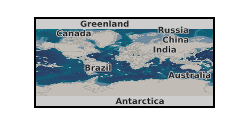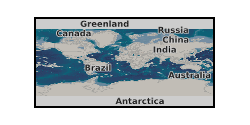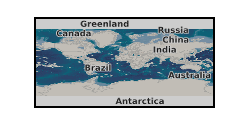Pore pressure
Type of resources
Topics
Keywords
Contact for the resource
Provided by
Years
Formats
Representation types
Update frequencies
-

The use of synthetic samples for rock physics experiments in the lab is a common practice for reservoir characterization and reservoir studies. This dataset gather ultrasonic P- and S-wave velocities and attenuations, electrical resistivity, axial and radial strains, permeability and mineralogical composition, of two synthetic and two natural sandstones, measured at variable realistic reservoir conditions of stress. The data were collected during an original study which aimed to assess the extent to which the measured properties between synthetic and natural sandstones are comparable. The work was accepted for publication in Geophysical Prospecting on the 01/10/2018, which can be accessed following the link: https://doi.org/10.1111/1365-2478.12699 Falcon-Suarez, I.H., Amalokwu, K., Robert, K., North, L., Best, A.I., Delgado-Martin, J., Callow, B., Sahoo, S.K. (accepted). Comparison of stress dependent geophysical, hydraulic and mechanical properties of synthetic and natural sandstones for reservoir characterisation and monitoring studies. Geophysical Prospecting
-

The data are from a suite of friction experiments performed on simulated gouges from the Nankai Trough (Japan). The simulated gouges were prepared by crushing cuttings of Nankai accretionary sediments collected during Integrated Ocean Drilling Program (IODP) Expedition 358. The cuttings were crushed to produce a powder (i.e. simulated gouge) with a grain size of >125 microns. These simulated gouges were sheared under a range of effective normal stress (10-75 Mpa) and pore-fluid pressure (5-75 Mpa) conditions while the sliding velocity was stepped between 0.3 and 3 microns/s to calculated the rate-and-state friction parameter (a-b). The Nankai gouge are strongly rate-strengthening and become more rate-strengthening (i.e. more frictionally stable) at elevated pore-fluid pressure. In contrast, varying the effective normal stress has minimal effect on the frictional stability of the gouges.
-

Data recorded during hydrostatic pressurisation and triaxial rock deformation experiments of Westerly granite and Darley Dale sandstone. Data consists of mechanical data (load, displacement, confining pressure) and pore pressure data (up- and downstream pore pressure, upstream intensifier volume, four pore pressure transducers mounted on sample). Contains all data necessary to evaluate the results presented in the paper entitled: 'Fluid pressure heterogeneity during fluid flow in rocks: New laboratory measurement device and method' by Brantut and Aben, submitted to Geophysical Journal International, and available at arXiv (arXiv:2006.16699).
-

This dataset contains pore pressure measurements from the Bunter Sandstone Formation across the Southern North Sea of the UK Continental Shelf including quadrants 41 -50. The pressure measurements have been collected from released offshore legacy well records available from the UK National Data Repository (NDR) which is managed and served by the North Sea Transition Authority (NSTA). The data were compiled by British Geological Survey researchers in support of research projects seeking to evaluate the potential of the Bunter Sandstone Formation for storage of carbon dioxide. These projects were funded by United Kingdom Research and Innovation (UKRI). The dataset comprises direct pressure measurements from formation pressure testers (downhole tools containing a probe and packer on a retractable pad, a pretest chamber and pressure gauges) as well as formation pressure estimates from Drill Stem Tests (DST). Most of the measurements comprise results from Schlumberger’s Repeat Formation Tester (RFT), Formation Multi Tester (FMT) and Modular Dynamics Tester (MDT) tools.
-

This dataset contains raw experimental triaxial testing data as outlined in "Castagna, A., Ougier‐Simonin, A., Benson, P. M., Browning, J., Walker, R. J., Fazio, M., & Vinciguerra, S. (2018). Thermal damage and pore pressure effects of the Brittle‐Ductile transition in Comiso limestone. Journal of Geophysical Research: Solid Earth, 123(9), 7644-7660.s, http://dx.doi.org/10.1029/2017JB015105". The data is provided in a .zip folder containing the files of 16 experiments that are accompanied by a README file for introduction. Files format is Microsoft Excel Worksheet (.xlsx) and data are tabulated. Each file contains the corresponding relevant sample’s details, and each column of data is clearly labelled, units included. For each experiment, time, radial and axial pumps volume displacements and pressures, top and bottom pore fluid pumps volume displacements and pressures, internal temperature, LVDT signals were recorded. Twenty right cylindrical samples of ‘Comiso’ limestone (Ragusa Formation; Sicily) were tested in triaxial compression at a range of confining pressures simulating depths of 290 m, 620 m, 1.2 km, and 2.0 km respectively, assuming an average density of the over-burden load of 2470 kg/m3. Prior to strength test, each sample was either oven dried (ca. 12 hours at 85 °C followed by cooling in a desiccator for 1 hour) or water saturated (samples in distilled water under vacuum for 24 hours). A subset of these samples has also been thermally treated at 150, 300, 450 and 600oC to induce thermal cracking prior to the mechanical testing. All tests were conducted at 10-5 s-1 axial strain rate in assumed drained conditions when relevant, and at room temperature. For saturated tests, the initial loading was applied in two steps, first by increasing Pc hydrostatically (σ1=σ2=σ3) until the desired confining pressure was reached, and then introducing pore fluid pressure, as per the functionality of the experimental set-up. The experiments were conducted by Drs A. Castagna, M. Fazio and P. Benson using the Snachez triaxial cell at the Rock Mechanics Laboratory of the University of Portsmouth. All responsible for the collection and initial interpretation of the data. Only 17 experiments are reported in this set of data; the missing 3 datasets are believed to be only available on the local computer storage of the triaxial apparatus used at that time.
 NERC Data Catalogue Service
NERC Data Catalogue Service